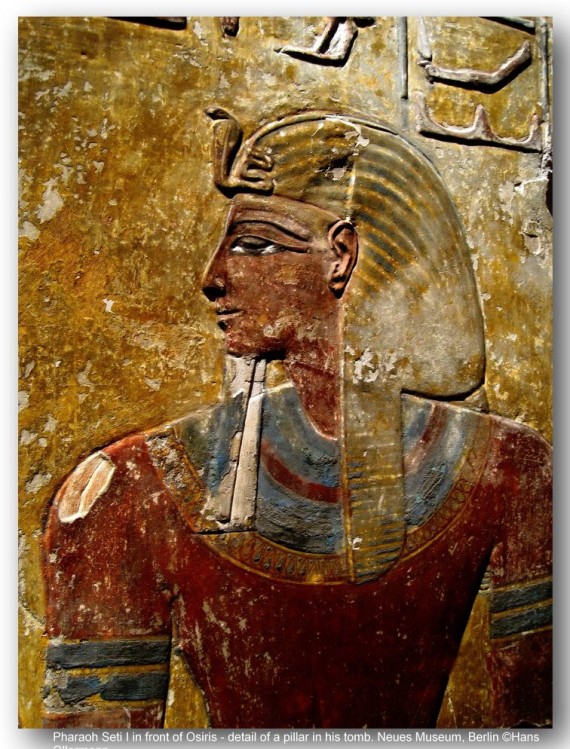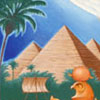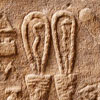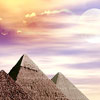The Mysterious Reincarnation of Omm Sety
Born in 1904 in the London suburb of Blackheath, Dorothy Louise Eady had a rather normal early childhood until one day that would change her life forever. At the age of 3, Dorothy slipped and tumbled down a flight of stairs. This was no minor spill, as the girl was found to be not breathing and when the panicked parents called the family doctor, their worst fears were confirmed. 3 year-old Dorothy Eady was pronounced dead at the scene, after which she was placed in her bed. The distraught doctor went to fetch a nurse to help him prepare the body for removal. In most cases, this might be the end of the story, but when the doctor returned with the nurse, Dorothy was found to be miraculously sitting up in bed, wide awake and playing as if nothing out of the ordinary had happened.
Not long after this frightening and bizarre ordeal, little Dorothy began to exhibit unusual and uncharacteristic behavior. She became excessively nervous, jumpy, and withdrawn. She would often hide under or behind furniture and was easily startled by even the most mundane things. She also started saying increasingly bizarre things. On many occasions, she demanded that her parents “take her home,” even when they were at home. She showed a certain sense of wonder and bewilderment at certain everyday items that she had never shown any particular interest in before, and her demeanor became generally more detached and morose. She often awoke from vivid dreams in which she claimed to see ancient buildings with sweeping columns. One day when she was looking at a children’s picture book, she came upon a picture of ancient Egypt and became transfixed by it, staring at it for long periods of time and saying that it was her “other home,” which baffled her worried parents.
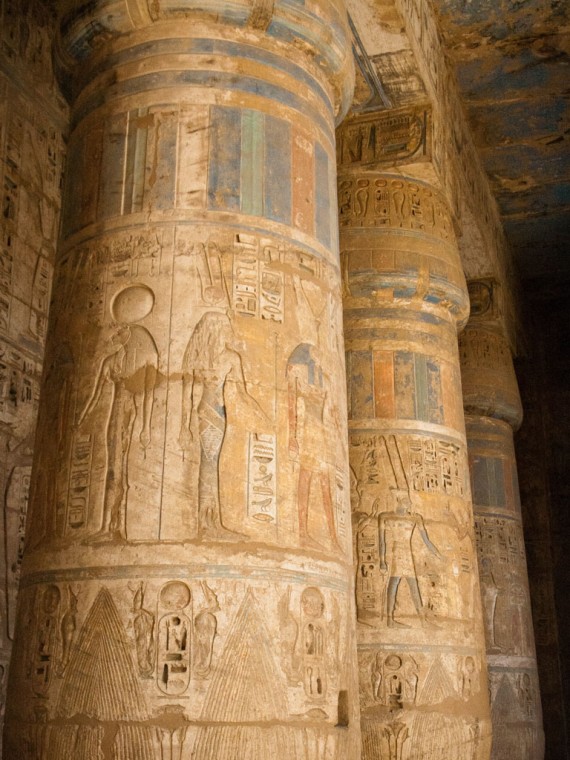 The strangest incident concerning Dorothy’s increasingly odd behavior came when her parents took her on a trip to the British Museum in London. While meandering through the museum, they came upon an exhibit on ancient Egypt, which was full of all manner of artifacts, mummies, and majestic statues of ancient Egyptian gods and goddesses. Dorothy’s eyes lit up when they entered the exhibition area, and when she came across some statues of some gods and goddesses she ran up to them and began reverently kissing their feet. Looking at photographs of the ruins of the temple of Seti I, the father of Rameses the Great, she proclaimed that it was her home, but she was baffled by the lack of gardens and trees and asked why they weren’t there. She also said that she personally knew Seti I and that he was a “kindly old man.” Dorothy was completely fascinated by the various Egyptian exhibits and seemed more alive than she had ever been since the accident. At one point, she reportedly screamed out in a loud voice and recited words that seemed to be from some strange language no one could understand. When her parents decided that enough was enough, they tried to get Dorothy to leave, but she resisted, claiming that she wanted to stay there “among her people.”
The strangest incident concerning Dorothy’s increasingly odd behavior came when her parents took her on a trip to the British Museum in London. While meandering through the museum, they came upon an exhibit on ancient Egypt, which was full of all manner of artifacts, mummies, and majestic statues of ancient Egyptian gods and goddesses. Dorothy’s eyes lit up when they entered the exhibition area, and when she came across some statues of some gods and goddesses she ran up to them and began reverently kissing their feet. Looking at photographs of the ruins of the temple of Seti I, the father of Rameses the Great, she proclaimed that it was her home, but she was baffled by the lack of gardens and trees and asked why they weren’t there. She also said that she personally knew Seti I and that he was a “kindly old man.” Dorothy was completely fascinated by the various Egyptian exhibits and seemed more alive than she had ever been since the accident. At one point, she reportedly screamed out in a loud voice and recited words that seemed to be from some strange language no one could understand. When her parents decided that enough was enough, they tried to get Dorothy to leave, but she resisted, claiming that she wanted to stay there “among her people.”
That fateful trip to the museum would not be the last of the weirdness, and indeed it only got worse. Dorothy’s Sunday school teacher claimed that she had denounced Christianity as being similar to “heathen” Ancient Egyptian, and suggested that her parents withdraw her from the class because she was upsetting the other children. This sort of thing also got her kicked out of the school she went to, when she refused to sing a hymn that requested for God to curse the Egyptians. When Dorothy was taken to Catholic mass, she made the odd comment that she liked it because it reminded her of the “Old Religion,” which unnerved those around her.
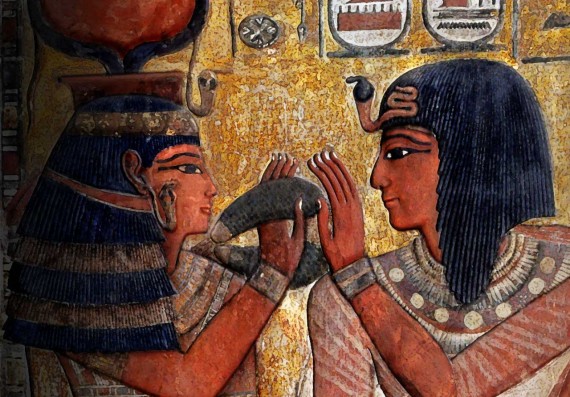 In the meantime, Dorothy would make many more trips back to the museum to fawn over the ancient Egypt exhibits. Between the ages of 10 and 12, she made numerous trips to the museum, indeed spending most of her free time there, and it was there that she eventually met a man by the name of E. A. Wallis Budge, keeper of Egyptian Antiquities at the British Museum, who was impressed by her enthusiasm and knowledge of Egypt and encouraged her to try studying hieroglyphics. She started taking a class on hieroglyphics and her teacher was astounded by how fast she picked it up, making quick progress in a subject that most took years to grasp. When asked how she could learn the complex symbols so fast, Dorothy gave the cryptic response that she was not really learning them from scratch, but rather being reminded of her old language that she had long forgotten.
In the meantime, Dorothy would make many more trips back to the museum to fawn over the ancient Egypt exhibits. Between the ages of 10 and 12, she made numerous trips to the museum, indeed spending most of her free time there, and it was there that she eventually met a man by the name of E. A. Wallis Budge, keeper of Egyptian Antiquities at the British Museum, who was impressed by her enthusiasm and knowledge of Egypt and encouraged her to try studying hieroglyphics. She started taking a class on hieroglyphics and her teacher was astounded by how fast she picked it up, making quick progress in a subject that most took years to grasp. When asked how she could learn the complex symbols so fast, Dorothy gave the cryptic response that she was not really learning them from scratch, but rather being reminded of her old language that she had long forgotten.
Throughout her early teenage years, Dorothy threw herself into the study of books on ancient Egypt at the local library, showing a profound and intuitive knack for it. During World War I, Dorothy relocated to her grandmother’s house in Sussex after a bombing raid, and she spent most of her time at the library there to continue her studies of ancient Egypt. It was around this time, when she was 15, that she began to be repeatedly visited in her dreams by a spirit named Hor-Ra, who told her that she was the reincarnation of a woman called Bentreshyt, who had long ago been a priestess of the temple of Seti I at Abydos, Upper Egypt. Hor-Ra would frequently visit Dorothy in her dreams and over a period of 12 months told her the story of her previous life. She was told that she had become a “consecrated virgin” of the temple of Seti I, but had broken her vows by engaging in an affair with Seti. Rather than face certain horrific death at the hands of the High Priest, she had opted to commit suicide. Dorothy would write dream journals of what the spirit told her in hieroglyphics, and by the time she was done, she had written around 70 pages of her story, all in ancient Egyptian. These visitations also led to severe bouts of sleepwalking and nightmares, which became so bad that she visited a mental hospital on several occasions for observation.
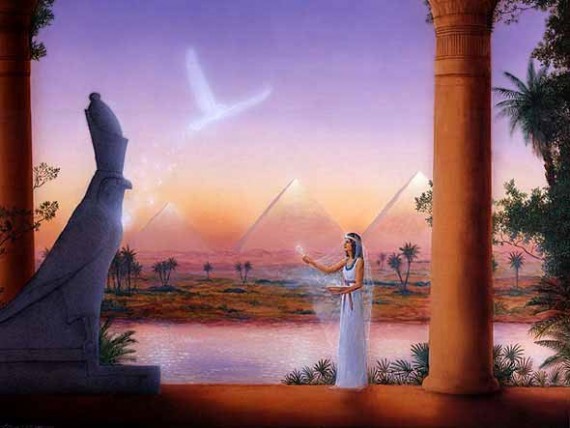 Dorothy left school at the age of 16 and toured a variety of historical sites and ruins around Britain, including places such as Stonehenge, with her father. She would later move to Plymouth and become a student at Plymouth Art School, where she began to collect a wide assortment of Egyptian antiquities in her free time and participated in several drama presentations on ancient Egypt, taking the role of the goddess Isis. She also became politically involved in working for the goal of an independent Egypt, and took a job at an Egyptian public relations magazine where she wrote articles and drew political cartoons to this end. It was around this time that she met an Egyptian student by the name of Eman Abdel Meguid, who she ended up marrying. It was at this time in her life that Dorothy would finally go to the land she had dreamed about for so long, when she went to live there with her husband in 1931. It is said that as soon as she arrived there, Dorothy fell to her knees, kissed the ground, and proclaimed that she was finally “home.” She would go on to have a son with Eman, who she named Sety, and this is where her nickname “Omm Sety,” or “Omm Seti,” comes from, with Omm meaning “mother of.”
Dorothy left school at the age of 16 and toured a variety of historical sites and ruins around Britain, including places such as Stonehenge, with her father. She would later move to Plymouth and become a student at Plymouth Art School, where she began to collect a wide assortment of Egyptian antiquities in her free time and participated in several drama presentations on ancient Egypt, taking the role of the goddess Isis. She also became politically involved in working for the goal of an independent Egypt, and took a job at an Egyptian public relations magazine where she wrote articles and drew political cartoons to this end. It was around this time that she met an Egyptian student by the name of Eman Abdel Meguid, who she ended up marrying. It was at this time in her life that Dorothy would finally go to the land she had dreamed about for so long, when she went to live there with her husband in 1931. It is said that as soon as she arrived there, Dorothy fell to her knees, kissed the ground, and proclaimed that she was finally “home.” She would go on to have a son with Eman, who she named Sety, and this is where her nickname “Omm Sety,” or “Omm Seti,” comes from, with Omm meaning “mother of.”
Dorothy’s marriage would prove to be short lived, and they went their separate ways in 1935, when Eman got a teaching job in Iraq and she refused to leave her beloved Egypt. She moved to live near the Giza Pyramids and it is here where she met the archeologist Selim Hassan, who was very impressed by Dorothy’s in-depth knowledge of hieroglyphics and ancient Egyptian history. It was through Hassan that she would get work at the Egyptian Department of Antiquities, the first woman ever to do so, where she worked mostly as a draftsperson and a secretary at first, but would go on to become an invaluable advisor to scholars with her extensive knowledge of ancient Egypt, as well as a prolific writer on the subject and skilled illustrator of ancient sites. In particular, Hassan found Dorothy’s knowledge, artistic skills, and advice so helpful that he credited her with being invaluable when writing his 10 volume series on his excavations at Giza. Indeed, Dorothy’s expertise in Egyptian history, hieroglyphs, and antiquities allowed her to become acquainted with many famous Egyptologists and archeologists at the time. Notably, she was hired as a research assistant by the renowned archeologist Ahmed Fakhry to help his with his Dashur Pyramid Research Project.
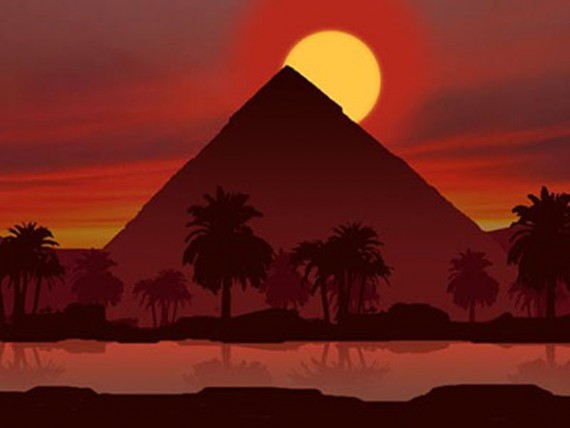 During these years, Dorothy showed various idiosyncrasies that caused a few eyebrows to be raised. She would sometimes spend the night in the Great Pyramid of Giza, and was known to venture out at night to perform strange rituals, say prayers, and make offerings to Horus at the Great Sphinx. Despite these eccentricities, she was so well respected for her work and so knowledgeable on all things ancient Egypt that none of her colleagues really thought much of it. It was not until she made the journey to Abydos, the location of the very temple of her dreams, where she was convinced she had lived in a past life, that things would take a turn for the truly bizarre.
During these years, Dorothy showed various idiosyncrasies that caused a few eyebrows to be raised. She would sometimes spend the night in the Great Pyramid of Giza, and was known to venture out at night to perform strange rituals, say prayers, and make offerings to Horus at the Great Sphinx. Despite these eccentricities, she was so well respected for her work and so knowledgeable on all things ancient Egypt that none of her colleagues really thought much of it. It was not until she made the journey to Abydos, the location of the very temple of her dreams, where she was convinced she had lived in a past life, that things would take a turn for the truly bizarre.
Dorothy’s move to Abydos came after the collapse of Fakhry’s Darshur project in 1956, when she suddenly found herself unemployed and decided to take a job as a draughtswoman at Abydos, a move which would be commended by King Seti I in her dreams, in which he allegedly proclaimed to her that the “wheel of fate were in motion” and that it would be a time of testing for her. She decided to make her home in a humble, modest village near the temple, where she would be called “Omm Sety” more and more, until it was how most everyone addressed her. Omm Sety’s main job in Abydos was to chronicle and translate blocks within the ruins of the temple of Sety I at Abydos, to copy down various inscriptions within the temple, as well as draw up plans of the architecture there, all things which she was exceedingly, intuitively, almost eerily good at. She also was known to remove her shoes when entering the temple, perform rituals, give offerings, and worship the ancient gods that she believed resided there. She spent so much time at the temple that she even turned one of its rooms into her office.
Omm Sety remained invaluable to research on ancient Egypt while in Abydos, and was heavily relied upon for her incredible ability to translate notoriously difficult texts in hieroglyphics and confounding works of art that even experienced researchers had trouble with, despite her lack of any real extensive formal training in the area. In addition to her translation skills, Omm Sety displayed a deep understanding of ancient Egyptian customs and traditions, as well as a phenomenal grasp of folk medicine and various obscure religious practices, and was often consulted on the finer points of such things. She even wrote a series of books and articles on the subject of ancient folk and religious traditions for the American Research Center in Egypt in the 1960s. Throughout all of this, Omm Sety showed an innate knowledge of such things that seemed to go beyond mere study from books.
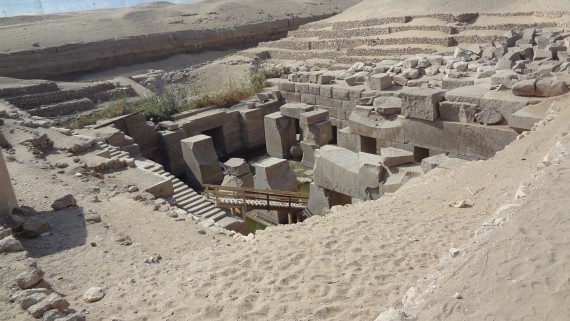 Omm Sety also immediately started demonstrating knowledge of the temple of Sety I at Abydos above and beyond what any layperson could possibly know through merely reading books or articles on the subject, and indeed things that were not to be found in any such sources to begin with. On one occasion, the director of the Department of Antiquities decided to test out Omm Sety’s claims of a past life here. She was told to stand in near total darkness in a room in which there was a series of wall paintings and asked to locate and identify each one based on her supposed memories alone. In each and every instance, Omm Sety successfully located, identified and described in detail each painting, even though she had never seen them before and none of the paintings nor their exact locations had even been published yet in any source.
Omm Sety also immediately started demonstrating knowledge of the temple of Sety I at Abydos above and beyond what any layperson could possibly know through merely reading books or articles on the subject, and indeed things that were not to be found in any such sources to begin with. On one occasion, the director of the Department of Antiquities decided to test out Omm Sety’s claims of a past life here. She was told to stand in near total darkness in a room in which there was a series of wall paintings and asked to locate and identify each one based on her supposed memories alone. In each and every instance, Omm Sety successfully located, identified and described in detail each painting, even though she had never seen them before and none of the paintings nor their exact locations had even been published yet in any source.
Omm Sety continued to exhibit an uncanny and somewhat unnerving ability to locate important lost archaeological sites from what she fervently insisted was memory rather than any kind of research. On one occasion, she told archaeologists to dig in one spot because she remembered a garden being there in the past. When they dug there they discovered the garden of the temple of Seti that no one had even been aware existed at all, exactly where Omm Sety had said it would be. She also was able to locate several important artifacts from where she “remembered” them being, and was on the mark every single time. Omm Sety became so renowned for her ability to find lost sites and artifacts that one English Egyptologist once famously stated during a dig “If Omm Sety were still here I’d take her word for where things can be found, any day, over the most-state-of-the-art equipment out there,” much to the approval of his colleagues, who all agreed. This was a common sentiment in the field regarding Omm Sety, and she was highly sought after as an advisor on a variety of digs by top archaeologists and Egyptologists.
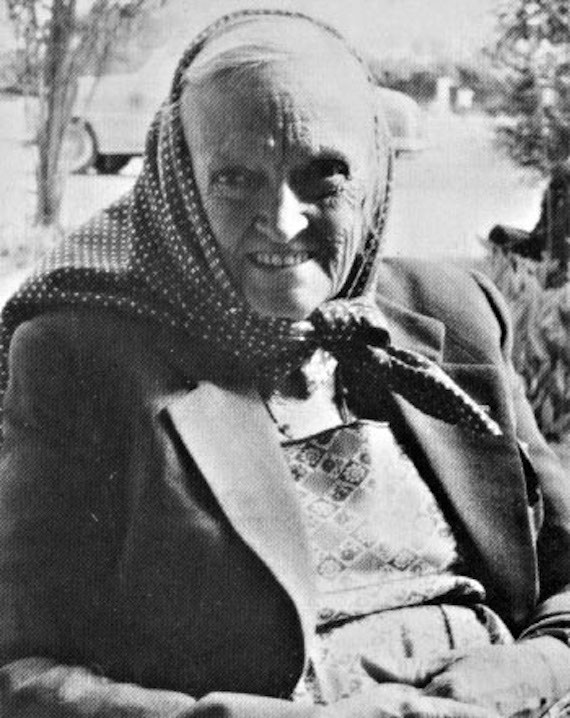 On another occasion, in the 1970s, Omm Sety proclaimed that she knew the secret location of the highly sought after tomb of Nefertiti, which had long eluded efforts to find it. She described it as being in a “most unlikely place” in The Valley of Kings near Tutankhamun’s tomb. This went against all common knowledge at the time that no new tombs were to be found in the valley, and so the claim was not taken particularly seriously even considering Omm Sety’s impressive knowledge of Egypt. However, in 1976 two anomalous soundings were uncovered in a sonar reading of the ground near Tutankhamun’s tomb. It was not until 1998 when anyone would make a serious effort to investigate the anomalies, when an expedition led by archaeologist Nicholas Reeves began a dig in the vicinity and discovered several intact seals of the famous 20th dynasty scribe Wen-nefer, whose seals adorned many tombs from the era. In 2000, another radar scan of the site produced evidence of two previously unknown chambers deep underground, but this expedition had to be halted due to an investigation into the suspected theft of priceless antiquities. In 2006, another expedition penetrated into one of the chambers and found extremely well-preserved equipment and supplies used for the mummification of elite royals, leading to speculation that the other anomalous chamber could be the undiscovered, sealed tomb of a king; just as Omm Sety had predicted.
On another occasion, in the 1970s, Omm Sety proclaimed that she knew the secret location of the highly sought after tomb of Nefertiti, which had long eluded efforts to find it. She described it as being in a “most unlikely place” in The Valley of Kings near Tutankhamun’s tomb. This went against all common knowledge at the time that no new tombs were to be found in the valley, and so the claim was not taken particularly seriously even considering Omm Sety’s impressive knowledge of Egypt. However, in 1976 two anomalous soundings were uncovered in a sonar reading of the ground near Tutankhamun’s tomb. It was not until 1998 when anyone would make a serious effort to investigate the anomalies, when an expedition led by archaeologist Nicholas Reeves began a dig in the vicinity and discovered several intact seals of the famous 20th dynasty scribe Wen-nefer, whose seals adorned many tombs from the era. In 2000, another radar scan of the site produced evidence of two previously unknown chambers deep underground, but this expedition had to be halted due to an investigation into the suspected theft of priceless antiquities. In 2006, another expedition penetrated into one of the chambers and found extremely well-preserved equipment and supplies used for the mummification of elite royals, leading to speculation that the other anomalous chamber could be the undiscovered, sealed tomb of a king; just as Omm Sety had predicted.
Above and beyond her intimate and seemingly innate knowledge of ancient Egypt, other bizarre attributes were reported for Omm Sety as well. People in the village where she lived in Abydos claimed that she was unafraid of cobras, and could spellbind them, after which she would feed them from her hand like pets without being bitten. She was also believed to have powerful medicinal abilities. Omm Sety was said to make use of the magical, curative waters of the sacred pool in the Osireion to heal herself as well as others of various ailments. In addition to her claims that the pool had cured her of arthritis, appendicitis, and allowed her to stop wearing glasses, several villagers also claimed that the waters had cured them of a wide range of afflictions, from respiratory illnesses to hearing and vision difficulties. Omm Sety was said to be especially good at curing impotency through what she said were spells written in ancient texts.
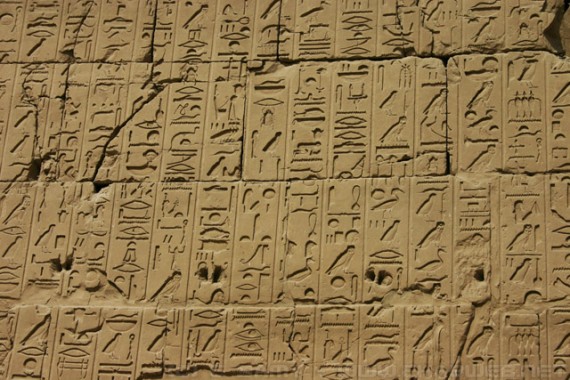 Although most archaeologists and Egyptologists were hesitant to put any weight into her well-publicized claims of reincarnation, or her purported healing abilities, there was no denying the remarkable contributions Omm Sety had made to the field. Researchers were hesitant to call Omm Sety a crackpot and although she was certainly seen as eccentric, she was never derided for it. Those who knew her described her as remarkably sane, despite her far out claims. There were also many in the field who were somewhat confounded by her unerring faculty of ancient Egypt, which left them scratching their heads over how to react to her claims of reincarnation, which no one publicly acknowledged, but perhaps secretly wondered at. Through it all, Omm Sety’s sincerity was never called into doubt, and the Egyptologist James P. Allen once said of her eccentricities and claims:
Although most archaeologists and Egyptologists were hesitant to put any weight into her well-publicized claims of reincarnation, or her purported healing abilities, there was no denying the remarkable contributions Omm Sety had made to the field. Researchers were hesitant to call Omm Sety a crackpot and although she was certainly seen as eccentric, she was never derided for it. Those who knew her described her as remarkably sane, despite her far out claims. There were also many in the field who were somewhat confounded by her unerring faculty of ancient Egypt, which left them scratching their heads over how to react to her claims of reincarnation, which no one publicly acknowledged, but perhaps secretly wondered at. Through it all, Omm Sety’s sincerity was never called into doubt, and the Egyptologist James P. Allen once said of her eccentricities and claims:
Sometimes you weren’t sure whether Omm Sety wasn’t pulling your leg. Not that she was a phoney in what she said or believed – she was absolutely not a con artist – but she knew that some people looked on her as a crackpot, so she kind of fed into that notion and let you go either way with it..She believed enough to make it spooky, and it made you doubt your own sense of reality sometimes.
No matter what Omm Sety said, the results she produced spoke for themselves. She was in fact remarkably well respected in the fields of archaeology and Egyptology, and scholars were quick to hail Omm Sety’s meticulous, impressive knowledge of ancient Egypt, with many of the top researchers of the field relying heavily on her observations as source material. Omm Sety served as a consultant and ghost writer for numerous research papers and books on the subject, for some of the biggest names in the field. It was a pretty impressive feat for a woman who had practically no formal education on the subject and was officially a mere draftswoman. Egyptologists and archaeologists were also impressed with her astute research skills. Egyptologist Klaus Baer of the Oriental Institute once said:
She had visions and worshipped the Ancient Egyptian gods. But she understood the methods and standards of scholarship which is usually not the case with nuts, nor did she desire to convert anyone.
Omm Sety was officially set to retire in 1964 due to a mandatory retirement age, but she was so useful and knowledgeable that the Antiquities Department made an exception and let her continue her work until 1969. Even after her retirement, Omm Sety continued to serve as a consultant for the Antiquities Department, as well as a guide for tourists visiting the Temple of Seti until her death on 21 April 1981. Her passing left a gaping hole in the field of Egyptology and a wake of wonder and mystery as to who she really had been. Was she merely Dorothy Eady, or was she the ancient Egyptian priestess Bentreshyt? Speculation over the years has focused on how exactly this relatively uneducated woman had come to her knowledge of the intricacies of all things ancient Egypt. Was this all truly from memories acquired from another life and another age? Or had she merely picked up all of her knowledge over her many years of intense interest and armchair study of the subject, gradually absorbing enough to be unrivaled even by top scholars? How had she known where all of those lost sites and artifacts had been? Regardless of what the answers to these questions may be, no one has ever doubted the invaluable contributions that Omm Sety has made to the field.
Posted in Past Life Therapywith comments disabled.


